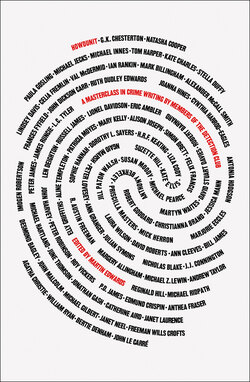Читать книгу Howdunit - Группа авторов - Страница 10
The Art of the Detective Story R. Austin Freeman
ОглавлениеThe status in the world of letters of that type of fiction which finds its principal motive in the unravelment of crimes or similar intricate mysteries presents certain anomalies. By the critic and the professedly literary person the detective story – to adopt the unprepossessing name by which this class of fiction is now universally known – is apt to be dismissed contemptuously as outside the pale of literature, to be conceived of as a type of work produced by half-educated and wholly incompetent writers for consumption by office boys, factory girls, and other persons devoid of culture and literary taste.
That such works are produced by such writers for such readers is an undeniable truth; but in mere badness of quality the detective story holds no monopoly. By similar writers and for similar readers there are produced love stories, romances, and even historical tales of no better quality. But there is this difference: that, whereas the place in literature of the love story or the romance has been determined by the consideration of the masterpieces of each type, the detective story appears to have been judged by its failures. The status of the whole class has been fixed by an estimate formed from inferior samples.
What is the explanation of this discrepancy? Why is it that, whereas a bad love story or romance is condemned merely on its merits as a defective specimen of a respectable class, a detective story is apt to be condemned without trial in virtue of some sort of assumed original sin? The assumption as to the class of reader is manifestly untrue. There is no type of fiction that is more universally popular than the detective story …
This being the case, I again ask for an explanation of the contempt in which the whole genus of detective fiction is held by the professedly literary. Clearly, a form of literature which arouses the enthusiasm of men of intellect and culture can be affected by no inherently base quality. It cannot be foolish, and is unlikely to be immoral. As a matter of fact, it is neither. The explanation is probably to be found in the great proportion of failures; in the tendency of the tyro and the amateur perversely to adopt this difficult and intricate form for their ’prentice efforts; in the crude literary technique often associated with otherwise satisfactory productions; and perhaps in the falling off in quality of the work of regular novelists when they experiment in this department of fiction, to which they may be adapted neither by temperament nor by training.
An extract from Richard Austin Freeman’s notebook detailing ‘Clues & evidence’ in the novel he was planning, Pontifex, Son and Thorndyke.
Richard Austin Freeman was a capable amateur artist and kept a sketchbook, which includes several pages like these of inscriptions on ancient gravestones.
An illustration of this type appears in Dr Thorndyke Intervenes and adds interest to a mystery about inheritance and a missing body.
Despite the flood of high-calibre crime novels over the years, some people continue to express reservations about the genre, frequently confusing their personal reading preferences with objective arguments about literary merit.
John Bingham, a Detection Club author who was also a spy (said to have been used by his colleague John Le Carré as a model for George Smiley) wrote a full-page article for the TV Times in the summer of 1958 headed ‘A Thriller a Day Keeps Crime at Bay’. He highlighted what he saw as the sociological value of crime fiction, suggesting that it may deter criminals, by showing the consequences of law-breaking, and may help to recruit people to the police (although several of Bingham’s finest novels were notable for the ruthless interrogations of innocent suspects; so much so that in Murder Plan Six, he felt impelled to write a preface denying that he was ‘anti-police’).
H. R. F. Keating, sixth President of the Club, said in Writing Crime Fiction that the genre ‘puts its reader first, not the writer’ whilst contending that, quite apart from its value as entertainment, ‘the crime story can, to a small extent or to quite a large extent, do what the pure novel does. It can make a contemporary map for its readers out of the chaos of their surroundings.’
In modern times, Ian Rankin has been a powerful and persuasive advocate of the genre’s quality and importance. In 1999, he gave a lecture in Japan under the aegis of the British Council arguing that crime fiction has real value. Developing and updating those arguments in this essay, he makes a formidable case.
